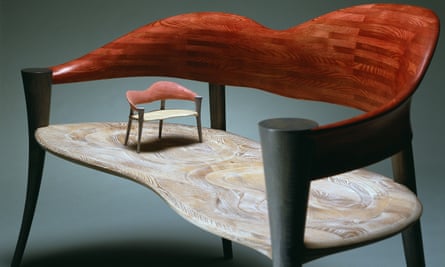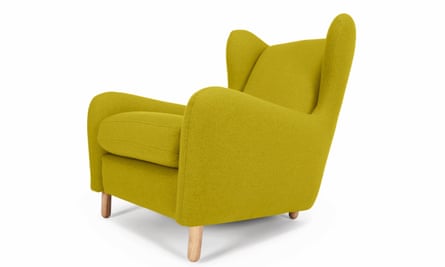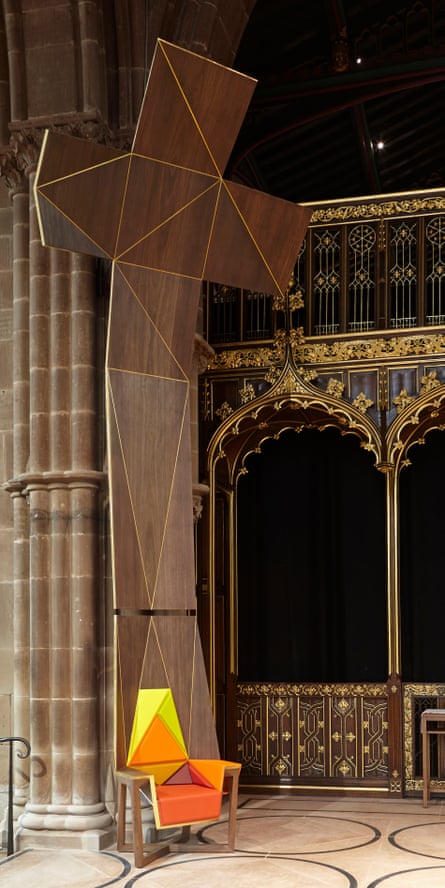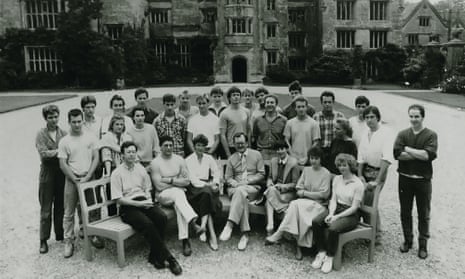It started with a table: a low, glass-topped timber square designed to be easily dismantled and folded into a crate (see picture below). Sold through Heal’s in the early 1960s for the princely sum of £6, it was furniture designer John Makepeace’s first big success. It also marked the beginning of a career that would see him evolve from a maker of mass-market hits and large-scale institutional commissions to beautifully crafted one-offs.
In the 1980s he was awarded an OBE, partly for his decades of graft and craft, but also for establishing Parnham College, a training school in Dorset that opened 40 years ago this month and whose revolutionary approach quietly transformed the landscape of British furniture design.
The Makepeace revolution actually started long before Parnham – and even longer before that foldaway table. “I used to play with wood endlessly as a child,” he laughs, recalling his postwar upbringing. “And wood was quite precious in those years. To get a piece of skirting board was a really big deal.” Makepeace grew up in a house filled with furniture crafted by his grandfather, a cabinetmaker, although his early career ambitions lay elsewhere. “I thought I was going to go into the church,” the 78-year-old remembers. “But a friend suggested going to Denmark for a holiday, where I started to see what contemporary designers were doing. And that was that, really.”

That trip ignited a passion that would see Makepeace through a long, thankless period of apprenticeship, in a time when Britain’s furniture industry was languishing in the doldrums. After several rejections, he persuaded a Dorset cabinetmaker to take him on and train him – “for a fee”, he sighs. “I think it was £3 a week” – and soon he set up on his own, earning acclaim as a maker of pieces that combined sleek modern lines with thoughtful detail. By the mid-1970s he’d become one of Britain’s most respected designers, but then he did something unexpected.
“I was very conscious that a lot of the students that came to work for me weren’t getting what they wanted from college in the way of practical experience or training in management,” he says. “Education was sliced up into specialisms, but if you’re going into business, it’s never just one discipline you need.”
Bidding to create a more functional perspective on design education, Makepeace set up the School for Craftsmen in Wood, which opened its doors in the grounds of Parnham House, a dilapidated Tudor manor, in autumn 1977. To realise his ambitions, Makepeace roped in eminent supporters, such as violinist Yehudi Menuhin and theatre director Peter Hall, and brought together an eclectic mix of designers, craftsmen and teachers to shape a curriculum with a uniquely holistic approach.

“Parnham was an extraordinary place,” says Steuart Padwick, a first-generation student. “One day you would be focusing on making perfect dovetail joints, the next you’d be creating shelters in the woods from bamboo and rhododendron trees.”
“I learned that you have to be more than a designer and a maker to make a business work,” says fellow alumnus Sean Sutcliffe. “John was quite exceptional in his vision of teaching this.”
Early reaction to the Parnham approach was positive. “We had 20 applications in the first fortnight,” Makepeace says, failing to mention that one came from future Oscar winner Daniel Day-Lewis. “It was a sea of visitors: Norman Foster, Richard Rogers, you name them! It caught the magic of the moment. But it’s only in retrospect that you can see it. I was just the one putting things in place.”

In addition to Padwick, who designs for online retailer made.com (“Such a lovely idea,” Makepeace enthuses), and Sutcliffe, who went on to work with Terence Conran, Parnham’s success stories range from David Linley to industrial designer Konstantin Grcic. The school’s alumni are scattered across the world, producing work for clients as diverse as Boeing, Adidas and IBM. But most, perhaps inevitably, have followed the path pioneered by Parnham’s founder – that of the independent furniture maker.
Makepeace’s imprint on our lives and homes might not be as instantly apparent as Terence Conran’s earthy modernism, Tom Dixon’s retro lines, or Lucienne Day’s elegantly playful textiles. His work has never had an instantly recognisable signature. But the designer’s influence is deeper than you might imagine, thanks both to the generations of makers trained at his school, and to the example of his own quietly successful career.
“John was our inspiration,” Padwick says. “And I’ve had more and more respect for him over the years. He’s a grafter with incredible energy, and shows no signs of slowing down.”

Proud as he is of what he achieved at Parnham, Makepeace is looking firmly ahead. He is passionate about sustainability, intelligent forestry and the use of native timbers, but he’s equally enthusiastic about new technologies, from 3D tree scanning to digital carving. “It’s so exciting,” he says. “It’s really an expression of our times. I’ve been able to do things that were never possible before.”
He pauses and leans in, thinking over what he’s said. “But it all still comes down to form, material and expression. That doesn’t change.”

Comments (…)
Sign in or create your Guardian account to join the discussion